Welcome, fellow travellers!
Rome, the Eternal City, invites you to wander through its fascinating past and explore the remains of the once-mighty Roman Empire.
Rome stands as the world’s greatest open-air museum, where nearly every street corner whispers tales of emperors, gladiators, and citizens who shaped Western civilisation over 2,000 years ago. The Eternal City offers an unparalleled opportunity to walk in the footsteps of ancient Romans, from the grand amphitheatres where crowds once roared to the intimate forums where politics and commerce flourished.
From grand arenas to sacred temples, the ruins in Rome reveal the artistic and architectural prowess of ancient times. Renowned as a living museum, Rome offers visitors the unique chance to walk in the footsteps of emperors, gladiators, and ordinary Roman people.
For those who love Rome and its rich history, exploring ancient Roman ruins is an unmissable experience.
With the Rome City Pass, visitors can seamlessly access important archaeological sites, skip lengthy queues, and use public transport to uncover the wonders of this historic city with ease.
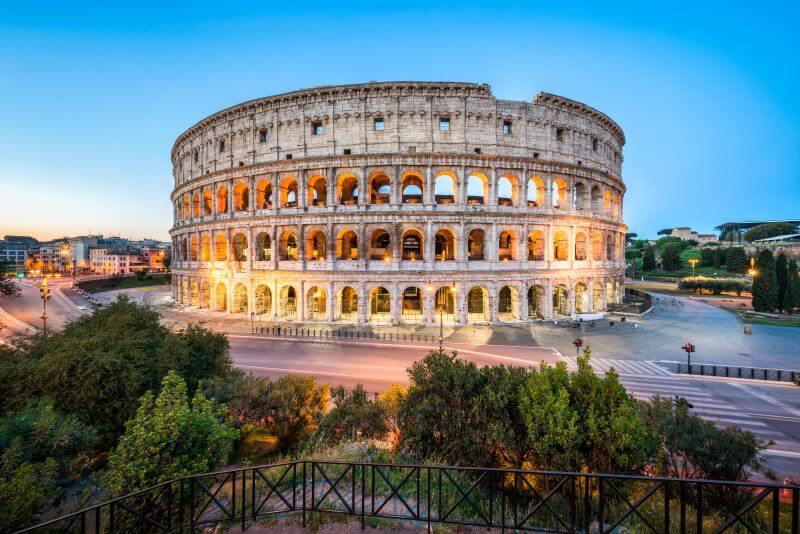
No visit to Rome is complete without standing before the mighty Colosseum – one of the most famous archaeological sites in the world. The Colosseum – officially known as the Flavian Amphitheatre –remains Rome’s most iconic landmark and arguably the most recognisable ancient structure on Earth.
The Colosseum, originally built under Emperor Vespasian and completed by Emperor Titus in 80 AD, stands as the most iconic of all Roman ruins. This massive amphitheatre was the centre for public events such as gladiator fights, animal hunts, and mock naval battles. Located near the Roman Forum, it is one of the most visited archaeological sites in the world.
The Colosseum’s sophisticated architecture allowed it to hold up to 80,000 spectators on its ground floor and upper floors. Beneath the arena, underground tunnels once bustled with activity, housing gladiators and animals before their dramatic appearances.

Visitor Information
Pro tip: Visit early morning (9:00-10:00 AM) or late afternoon (5:00-6:00 PM) for the best lighting and smaller crowds.
The amphitheatre's sophisticated engineering included a complex underground area called the hypogeum, where gladiators and wild animals waited before their arena appearances. The Colosseum's retractable awning system, operated by sailors from the Roman navy, provided shade for spectators during lengthy spectacles.
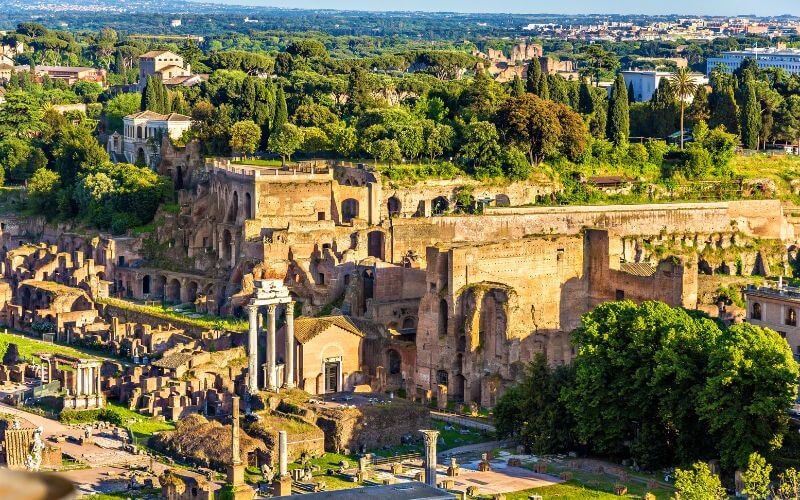
The Roman Forum and Palatine Hill form an archaeological complex that served as the beating heart of the ancient Roman Empire. These interconnected sites offer visitors the chance to explore where senators debated, emperors ruled, and citizens gathered for nearly a millennium, and are central to understanding the power and influence of ancient Rome.
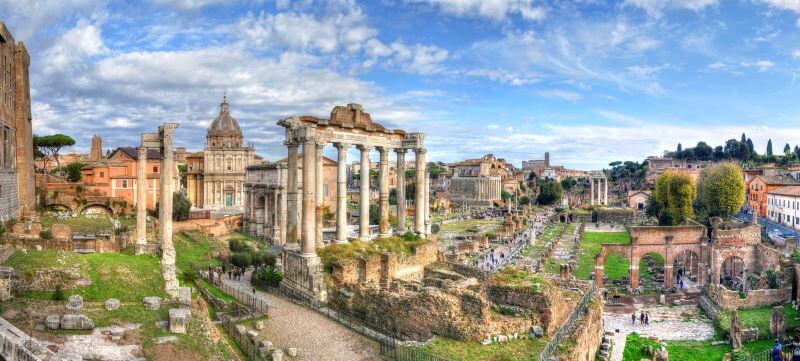
Just a short walk from the Colosseum lies the Roman Forum, one of the most important archaeological sites in the Eternal City. Once the political, religious, and social centre of the Roman Empire, it was home to temples, basilicas, and arches that showcased the might of Rome. Stroll among the remnants of the Temple of Saturn, the Arch of Titus, and the House of the Vestal Virgins – each a testament to the power and sophistication of Roman architecture and engineering.
The Roman Forum housed the city’s most important religious, political, and commercial buildings. Key highlights include:
The Senate House (Curia Julia) – where Roman senators met to govern the empire
Temple of Vesta – maintained by the Vestal Virgins who kept Rome’s sacred flame burning
Basilica of Maxentius – showcasing Roman architectural innovation
Via Sacra – the main ceremonial road where triumph parades concluded

The nearby Palatine Hill, one of Rome’s oldest areas, holds the ruins of imperial palaces and offers stunning views of the Circus Maximus and the city. The hill is also linked to the myth of Romulus and Remus, making it a sacred area in Roman history. Here, emperors built grand palaces surrounded by lush gardens. Excavations have revealed well-preserved ruins, giving visitors a glimpse into the luxurious lifestyle of ancient Rome’s elite. Archaeological excavations have revealed:
House of Augustus – remarkably preserved frescoes from the first emperor’s residence
Palace of Domitian – sprawling imperial complex with throne room and gardens
Palatine Museum – housing sculptures, frescoes, and artifacts discovered on-site
Visitor Information
Address: Via della Salaria Vecchia, 5/6, 00186 Rome, Italy
Opening Hours: 9:00 AM – 6:00 PM (winter), 9:00 AM – 7:00 PM (summer)
Entry Fee: €19 – combo ticket of Colosseum, Roman Forum and Palatine Hill – as of October 2025
The term "palace" originates from Palatine Hill, or Palatium in Latin, as emperors like Augustus and Domitian built their opulent residences there.
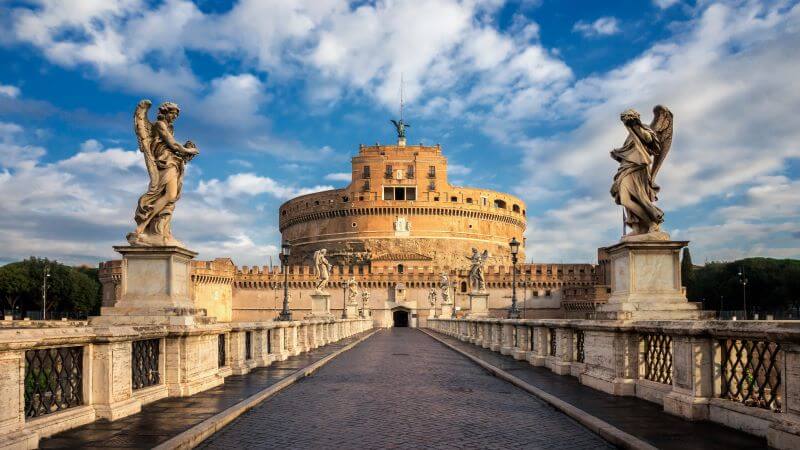
Built as Emperor Hadrian’s mausoleum in 139 AD, Castel Sant’Angelo later became a fortified papal residence during the Middle Ages. Today, it houses a museum showcasing Renaissance art, ancient weapons, and papal apartments. From here you can enjoy spectacular panoramic views across Rome.
Visitor Information
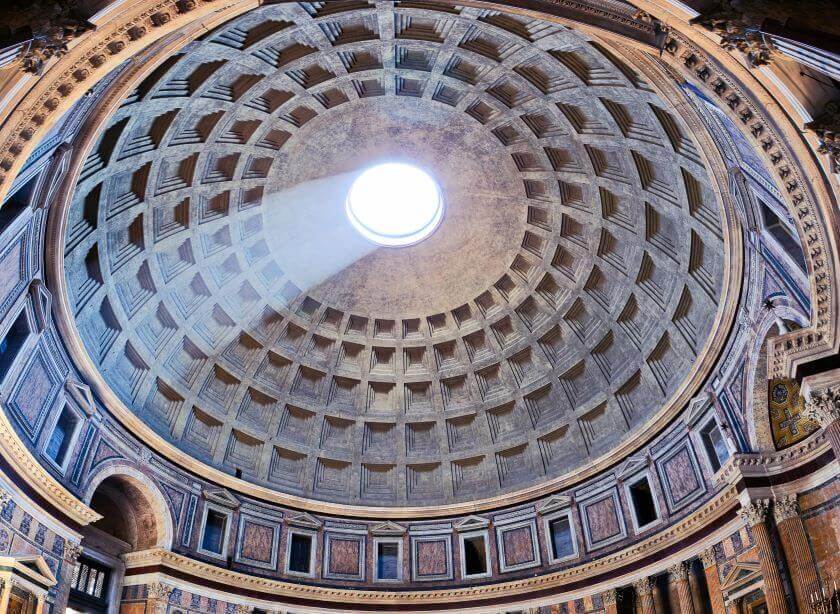
The Pantheon, constructed by Emperor Hadrian around 126 AD, stands as one of the most remarkable and well-preserved buildings from ancient Rome. Its immense concrete dome, featuring a central oculus that allows natural light to flood the interior, is a testament to Roman engineering brilliance. For over 1,300 years, this dome held the title of the world’s largest unreinforced concrete dome, solidifying the Pantheon’s place as a pinnacle of Roman architectural innovation.
Visitor Information
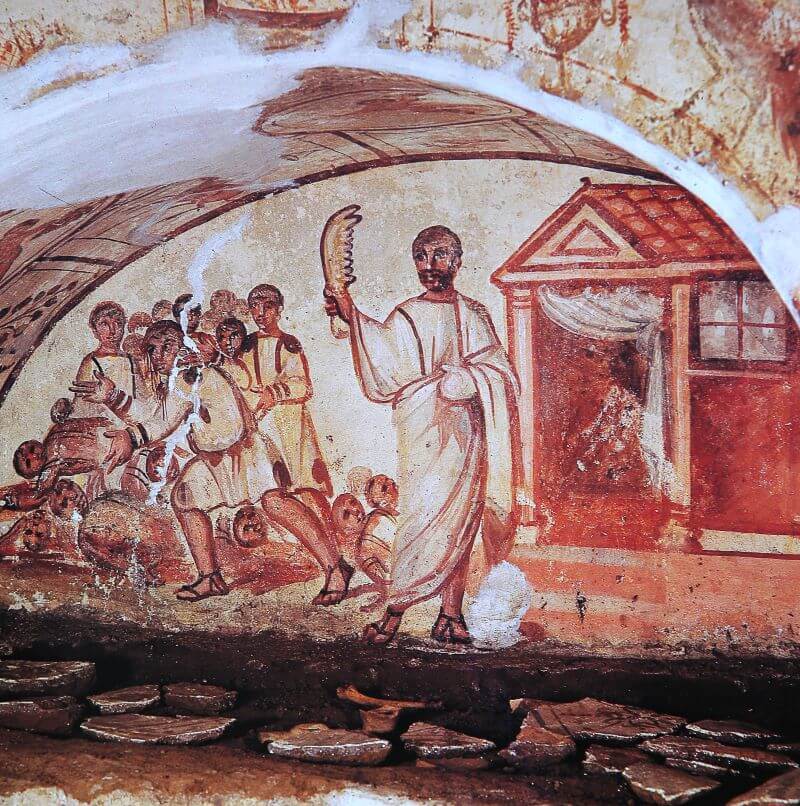
For a journey beneath the surface, the Catacombs of St Callistus are a fascinating archaeological site. These underground tunnels once served as Christian burial grounds during Roman times. Stretching for kilometres, the catacombs contain intricate frescoes, tombs of martyrs, and inscriptions in Latin that date back centuries. Exploring this labyrinth offers a moving insight into early Christian life and faith during the Roman Empire.
These underground burial chambers stretch for nearly 20 kilometres (!) beneath Rome, providing insight into early Christian life and burial practices.
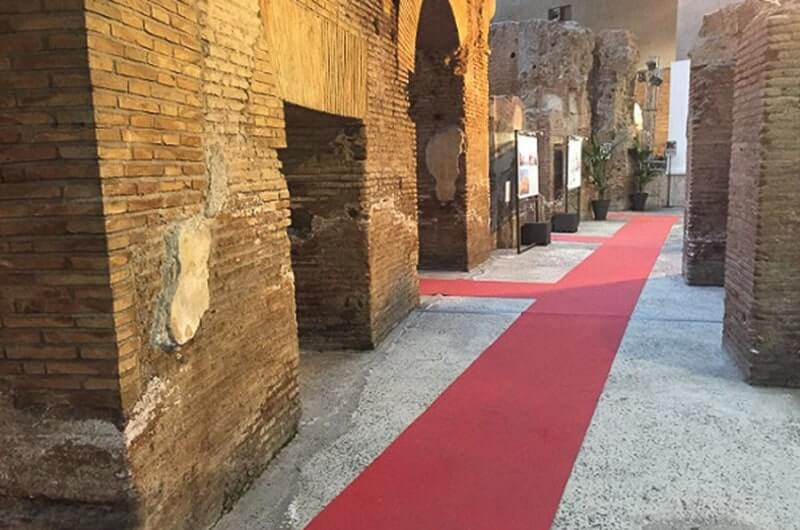
Another well-preserved underground complex, the Domitilla Catacombs, are among the largest and most complete in Rome. Dating back to the 2nd century AD, these tunnels extend over 15 kilometres and house thousands of tombs.
The frescoes and inscriptions found here shed light on Roman times and the spread of Christianity. For those interested in ancient art and sacred history, this archaeological site is a must-see.
Beneath the lively Piazza Navona lies the Stadio di Domiziano, an archaeological site that reveals one of Emperor Domitian’s greatest constructions. Originally built for athletic competitions and chariot races, this arena once hosted public events celebrating Roman achievements.
Today, visitors can explore the ruins below street level, offering a unique perspective on how Rome’s modern cityscape was built atop ancient foundations.

Tucked away near the Colosseum, the Case Romane del Celio (Houses on the Caelian Hill) are a hidden gem among Rome’s ruins. These well-preserved ancient homes reveal colourful frescoes, private chapels, and intricate mosaics that showcase the art and daily life of wealthy Romans. Walking through these rooms feels like stepping back into the past, uncovering stories from the ground floor of ancient Roman society.
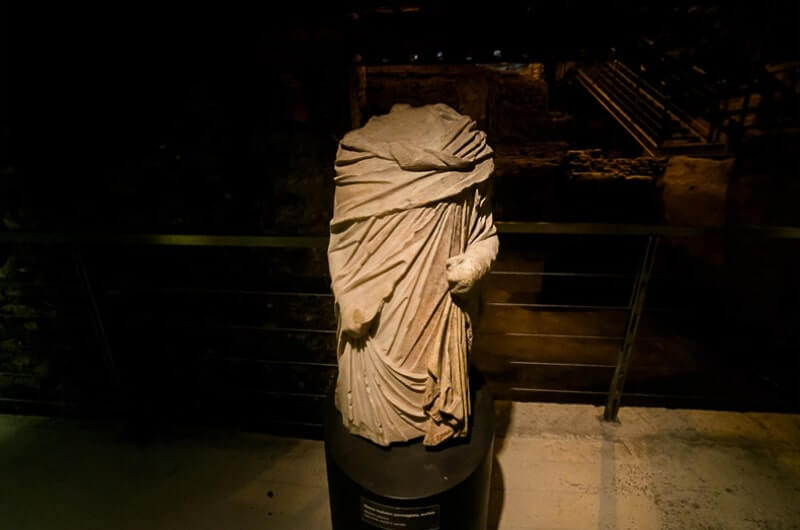
Close to one of Rome’s most famous landmarks, the Trevi Fountain, lies Vicus Caprarius – an underground archaeological site that reveals a network of Roman buildings and water systems. Sometimes called the “City of Water,” it’s a fascinating reminder of the ingenuity of Roman engineering. Visitors can see remnants of walls, rooms, and an ancient aqueduct that once supplied the baths and fountains of the Eternal City.

The Domus Aurea, or Golden House, was Emperor Nero’s extravagant palace, built after the Great Fire of Rome in 64 AD. This architectural marvel featured opulent rooms, vast gardens, and an artificial lake. After Nero’s death, his successors repurposed much of the complex, filling in the lake to build the Colosseum.
Today, visitors can explore the underground tunnels and discover frescoes and intricate designs that showcase the height of Roman art and architecture.
Visitor Information
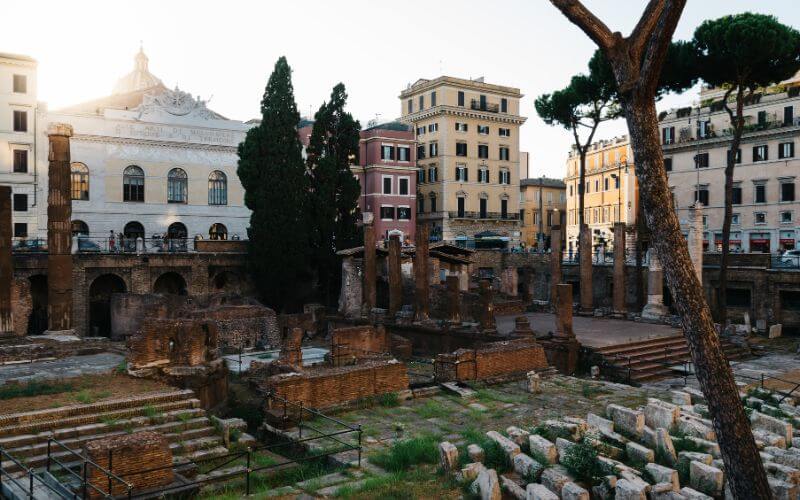
This archaeological site contains four Republican-era temples dating from the 4th-2nd centuries BC, making them among Rome’s oldest surviving structures. Most famously, this area includes the remains of the Theatre of Pompey, where Julius Caesar was assassinated on the Ides of March, 44 BC.
The site is also home to over 150 cats, descendants of the feral cats that have lived among Rome's ruins for centuries. The volunteer-run cat sanctuary operates within the archaeological area.
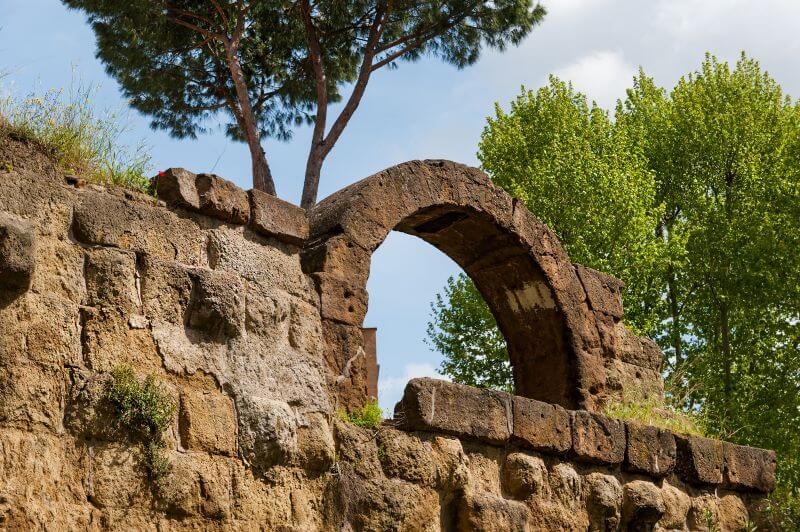
Viewing locations: Near Termini Station, Aventine Hill
These ancient fortifications protected early Rome and demonstrate the city’s strategic defensive planning. According to ancient tradition, it was built in the 6th century BC; however, the surviving parts date back to the 4th century BC.
Just outside Rome, the Ostia Antica Archaeological Park offers one of the best-preserved examples of a Roman province town. Once the bustling port of ancient Rome, Ostia Antica was a centre of trade and culture. Visitors can walk through streets lined with temples, baths, and homes featuring colourful mosaics. Highlights include the ancient theatre, public baths, and an ancient aqueduct system that once brought water to the city. It’s an immersive way to experience daily life during the height of the Roman Empire.
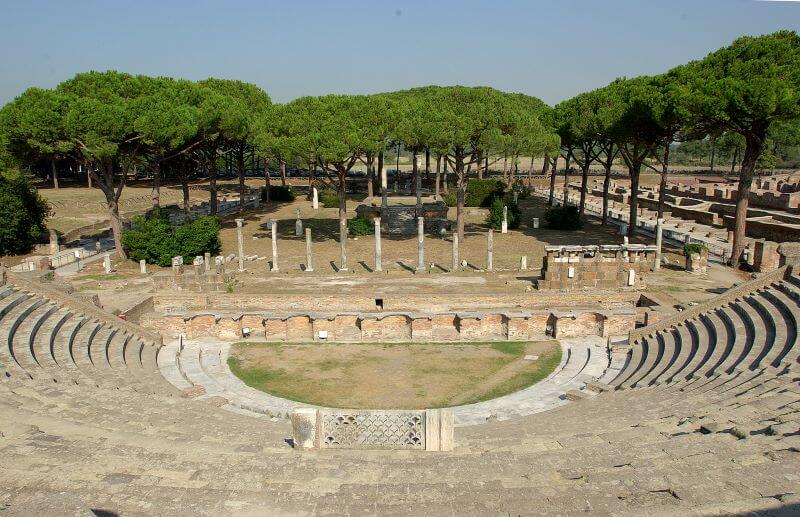
Exploring the ruins of ancient Rome can be both exciting and overwhelming, with so many important archaeological sites to see and limited time to take it all in. To make the most of your journey, careful planning is essential.
Whether you’re visiting famous landmarks like the Colosseum, Roman Forum, or Palatine Hill, or uncovering hidden gems like underground tunnels and ancient aqueducts, understanding the best times to visit can transform your experience. With a little preparation, you can avoid crowds, enjoy the perfect lighting for photos, and immerse yourself fully in the grandeur of the Eternal City.
Visiting the sights at the right time of day can make a world of difference in how you experience the city’s ancient wonders. Early mornings often provide fewer crowds and cooler temperatures, ideal for visiting iconic sites such as the Colosseum or the Roman Forum.
Meanwhile, afternoons offer golden light that enhances the beauty of Rome’s ruins, from the gardens of Palatine Hill to the grand architecture of the Pantheon. By planning your visits around peak hours and natural light, you’ll not only avoid long queues but also gain a more serene and memorable perspective of ancient Rome.
Time of Day | Advantages | Best Sites |
9:00-10:00 AM | Smaller crowds, good lighting | Colosseum, Roman Forum |
11:00 AM-2:00 PM | All sites open, guided tours available | Museums, indoor sites |
3:00-5:00 PM | Afternoon light, fewer tour groups | Palatine Hill, Pantheon |
5:00-7:00 PM | Golden hour photography | Castel Sant’Angelo, outdoor sites |

Most major archaeological sites offer:
Rome provides free water from over 2,500 public fountains (nasoni). These continuously flowing fountains offer fresh, safe drinking water–perfect for refilling bottles during long exploration days.
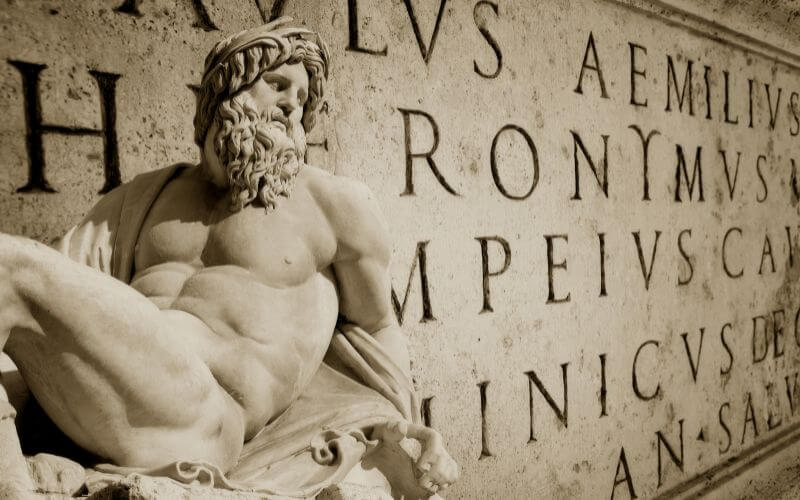
Rome’s ancient ruins offer an unparalleled journey through time, where every weathered stone and crumbling arch tells stories of triumph, innovation, and human ambition that shaped our modern world. From the thunderous crowds of the Colosseum to the intimate chambers where emperors once slept, these archaeological treasures provide tangible connections to one of history’s greatest civilisations.
From the grandeur of the Colosseum to the sacred area of Palatine Hill, the Eternal City’s archaeological treasures are a testament to the ingenuity and influence of the Roman Empire. With careful planning and the Rome City Pass in hand, you can experience the best of ancient Rome and create memories that will last a lifetime.

The Turbopass Rome City Pass gives you access to some of the most iconic archaeological sites in the Eternal City, all with the convenience of one digital ticket on your mobile device.
Included in the Rome City Pass are the Colosseum, Roman Forum, and Palatine Hill (combined ticket), where you can explore the heart of ancient Roman life and its grand architecture.
You’ll also enjoy entry to must-see landmarks like Castel Sant’Angelo, the Pantheon, and the Catacombs of St. Callistus, as well as lesser-known gems like the Archaeological Park of Ostia Antica, Stadio di Domiziano, Case Romane del Celio, and Vicus Caprarius. With the Rome City Pass, you can turn your visit to Rome into the perfect city break for anyone interested in history.
And for anyone travelling with you, purchasing the City Pass is also worthwhile: You’ll save time, avoid lengthy queues, and enjoy the flexibility to explore at your own pace. Whether it’s the grandeur of the Colosseum or the underground mysteries of Rome’s hidden layers, this pass ensures a seamless and cost-effective way to experience the best of ancient Rome.